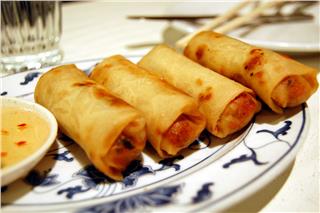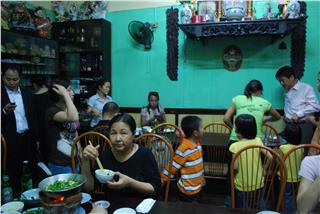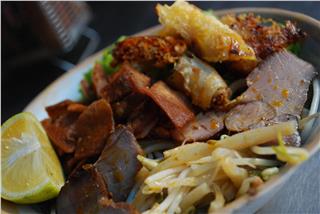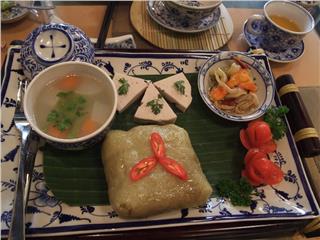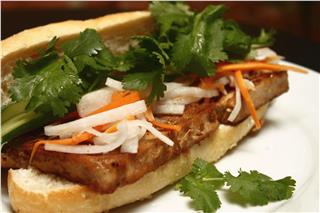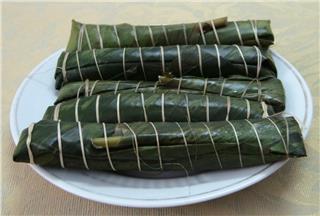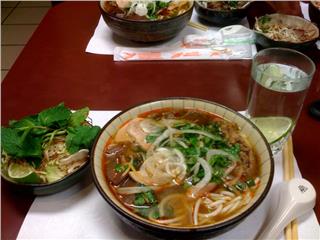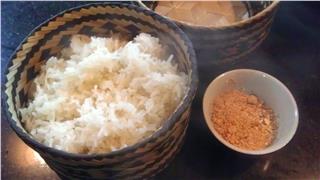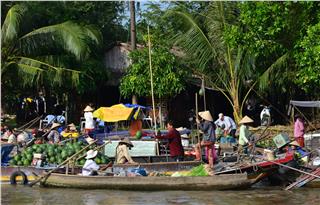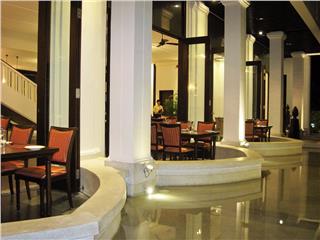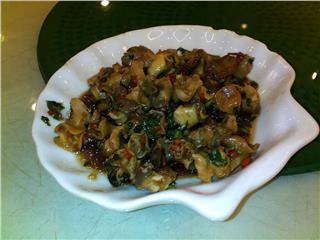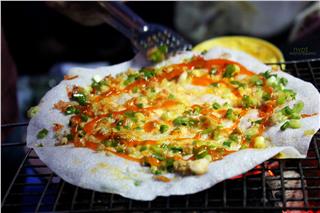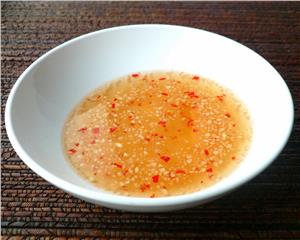Hanoi steamed sticky rice arouses nostalgia
Fri, 10 Apr 2015 . Last updated Thu, 25 Jun 2015 09:05
-
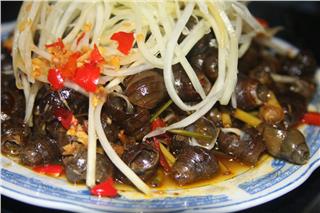 Tasty snail dishes in Vietnamese cuisine 6860 viewed
Tasty snail dishes in Vietnamese cuisine 6860 viewed -
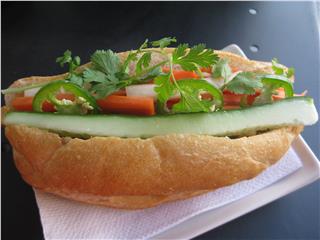 Taste of Banh Mi in Vietnam cuisine 6215 viewed
Taste of Banh Mi in Vietnam cuisine 6215 viewed -
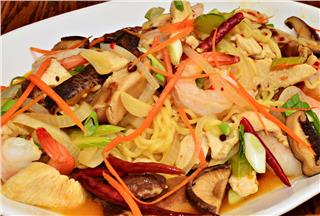 Delicious Vietnamese mushroom dishes 5839 viewed
Delicious Vietnamese mushroom dishes 5839 viewed -
 Traditional Vietnamese Tet food 5730 viewed
Traditional Vietnamese Tet food 5730 viewed -
 Phu Quoc fish sauce 5546 viewed
Phu Quoc fish sauce 5546 viewed -
 Com Vong special dish of autumn in Hanoi cuisine 5527 viewed
Com Vong special dish of autumn in Hanoi cuisine 5527 viewed -
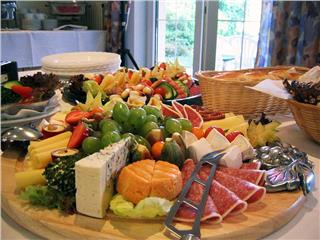 German food culture in Hanoi 5149 viewed
German food culture in Hanoi 5149 viewed -
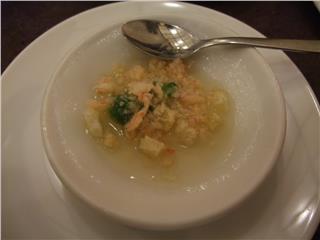 Assorted cakes in Hue cuisine 5029 viewed
Assorted cakes in Hue cuisine 5029 viewed -
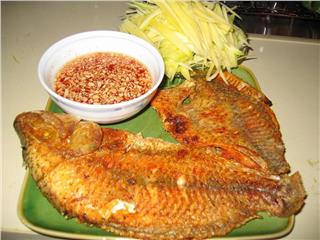 Delicious Vietnamese fish dishes 5001 viewed
Delicious Vietnamese fish dishes 5001 viewed
“Xoi” (steamed sticky rice) is a popular dish in many parts of the country. However, Hanoi steamed sticky rice comes in various colors and flavors. Once you’ve tasted Hanoi sticky rice, a dish with spiritual meaning, you’ll surely never forget its flavor.
“Xoi” stalls that are found in many small alleys offer many types of traditional “xoi” like “xoi lac” (steamed sticky rice with peanuts), “xoi dau xanh” (steamed sticky rice with green beans), “xoi trang” (white steamed sticky rice), “xoi xeo” (steamed sticky rice with green beans, fried onion and fat), “xoi vo” (sticky rice cooked with split green beans), etc. There are also new types like “xoi vung dua” (steamed sticky rice with sesame and coconut), “xoi com dua” (steamed young sticky rice flakes with coconut), or “xoi gac” with green beans and coconut.
Steaming hot “xoi xeo” and “xoi do xanh” in bamboo baskets are served everywhere as breakfast. Plates of red silky momordica sticky rice are found in offering food trays during Tet festival or wedding feasts. “Xoi” is a familiar snack. However, no one dare say they’ve tried all types of “xoi”. From sticky rice, we can cook many types of “xoi” with different tastes that are impressive.
No one knows when “xoi” was made first. It’s possible since Lang Lieu first created “banh chung” (square sticky rice cake) and “banh day” (round sticky rice cake), symbols of Earth and Heaven, from sticky rice. According to ancient books, Vietnamese people in the past made many types of “xoi” as offerings. Noticeably, “xoi ngu sac” (five-colored sticky rice) represents five directions.
“Xoi” is found in many parts of the country. However, “xoi” in Hanoi is distinctive. “Xoi” is not only a breakfast snack, but it is also found in food trays on special occasions like Tet festival, first birthday, wedding, etc. “Xoi” stalls are found in many places. From small baskets of “xoi”, its fragrance is wafting through the air, making an irresistible appeal.
“Xoi” is among few dishes that can be served abundantly. Each type of “xoi” has a flavor and way to combine with other types of food. “Xoi trang” can be served with “rouc” (salted shredded meat), braised pork, pork pies, or Chinese sausages. “Xoi gac” with attractive red color goes well with lean-and fat pork pies. “Xoi lac” and “xoi do xanh” are coupled with sesame or “ruoc”.
“Xoi xeo” is perhaps the most sophisticated-made snack. It is the perfect blend of pure white color of steamed sticky rice, light yellow color of green beans, and glossy golden-brown color, tasty greasiness and butteriness of fried onion. When it comes to “xoi”, we cannot but mention “xoi khuc” which is made from a kind of leaves. Hanoians like enjoying this type of “xoi” in “khuc” (everlasting gnaphalium) season. Unlike “xoi” with “ruoc” or meat, “xoi khuc” is made from young everlasting ganphalium leaves that are found in fields or by rivers, high quality sticky rice and green beans harvested in winter. A bit fried onion and pork belly will perfect the snack. The flavor of “xoi khuc” can make you feel warmer in Hanoi’s winter. How fragrant and plain this snack is.
A portion of “xoi khuc”, including a bit of “xoi trang”, a round ball of “khuc” cake, is wrapped in a piece of banana leaves. During chilly winter nights we can feel warm from steaming hot “xoi”. Taking a bite of “xoi khuc”, we recognize the tasty glutinosity of sticky rice, the piquancy of peppers and the butteriness of green beans. Hanoi is home to many famous “xoi” stalls like the fried “xoi” stall in De La Thanh, the “xoi che” stall in Bui Thi Xuan, the “xoi khuc” stall in Nguyen Cong Tru, etc.
However, when it comes to “xoi” stalls in Hanoi, we cannot but mention “Xoi Yen” in Nguyen Huu Huan street. With cooking secrets which bring distinctive tastiness to “xoi”, this stall has become the first choice of many diners. Its “xoi xeo” has appealing yellow color, pretty tasty glutinosity and unmistakable flavor. Place a handful of steamed sticky rice on a piece of banana leaf. Pour a little liquid fat, put some fried onion and smashed steamed green beans onto the steamed sticky rice. Braised meat, fried egg or pate could be added depending on your taste. From a bite of “xoi” as such, we can find all the flavors: sweetness, spiciness, greasiness and butteriness. Hanoi “xoi” has diverse flavors, colors and names.
However, Ke Ga steamed sticky rice is not really a type of “xoi”. Ke Ga villagers are in the habit of getting up at 2am to cook “xoi”, which has been their main means of living for years. Over the time, Ke Ga steamed sticky rice has held an elegant appeal to Trang An people who are famous for food choosiness. With traditional recipes, “xoi” of Ke Ga has distinctive tastiness and strong fragrance which arouse tormenting nostalgia among Hanoi natives who are far away. It’s difficult to cook tasty “xoi”. It’s even more difficult to bring its true tastiness to diners.
The wrapping of “xoi” is pretty plain but has certain meaning. Hanoi people in the past wrapped “xoi” in fresh lotus leaves which make the snack look more elegant and smell more fragrant. It’s possibly because lotus is the symbol of purity. For Hanoi people, elegance can be shown through eating and drinking. Hanoians eat “xoi” with hands. They wash their hands before rolling “xoi” into egg-shaped fists. Holding “xoi” with their hands, they can feel how tasty steamed sticky rice is. “Xoi” has become an indispensable part in spiritual rituals. It is so plain but scared. White sticky rice wrapped in green fragrant banana leaves… “Xoi” sellers smile to give warm welcome…All make a lovely picture of life. Walking around Hanoi street in a winter morning, we suddenly feel touches by familiar images of steaming hot “xoi” stalls.
When “xoi” is done to a turn, we take the steamer off the fire. Wait until “xoi” cools down a bit and then add a little sugar. “Xoi gac” has eye-catching red color and elegant fragrance. “Gac” has natural red color which is believed to bring good luck, harmony and favorableness. “Xoi gac” is soft, fragrant and sweet.
“Xoi ngo” is the perfect blend of sticky rice and sticky corn and the typical smell of fried onion which do not cloy our appetite. A plate of “xoi ngo” looks beautiful with white color of corn seeds and brown color of fried onion. Various “xoi” recipes make us so amazed. “Xoi che” is an example. The combination of “xoi” and “che do xanh” makes up a tasty dish. Separate gains of “xoi”, yellow peeled beans, cool sweet soup, fragrance of coconut and beans…All of these bring you such a pleasant felling when you eat them.
Once you’ve tasted Hanoi sticky rice, a dish with spiritual meaning, you’ll surely never forget its flavor. This is a popular dish of Vietnamese cuisine. Each kind of “xoi” has a different color, way of cooking and enjoying. The dish is as simple as the daily life of Vietnamese people and it really carries their love for their homeland.
Source: VTC10 - NETVIET
- Tags:
- Hanoi cuisine
- Vietnamese cuisine
- Hanoi food
- Hanoi steamed sticky rice
- Hanoi sticky rice
- Hanoi “xoi”

